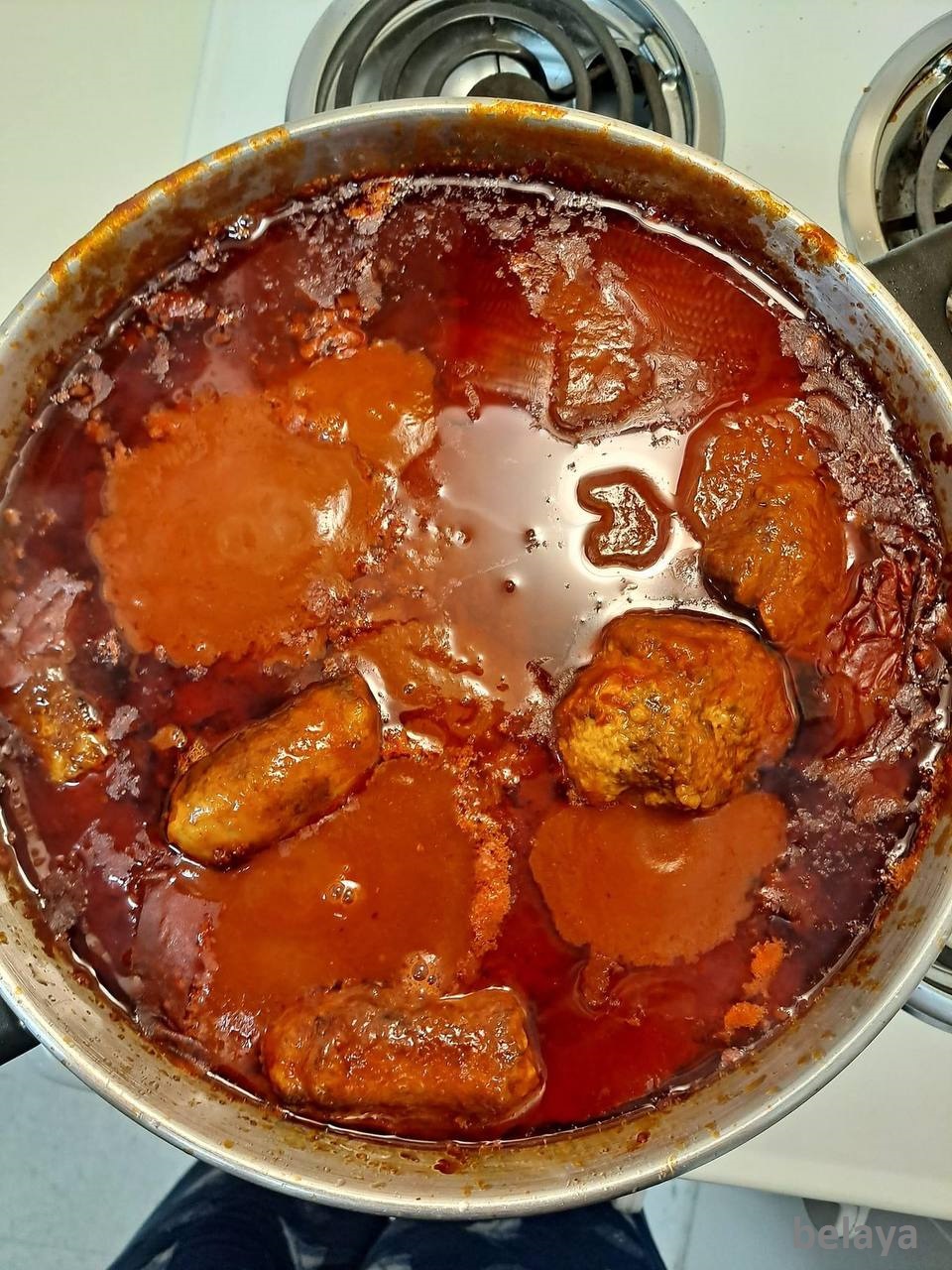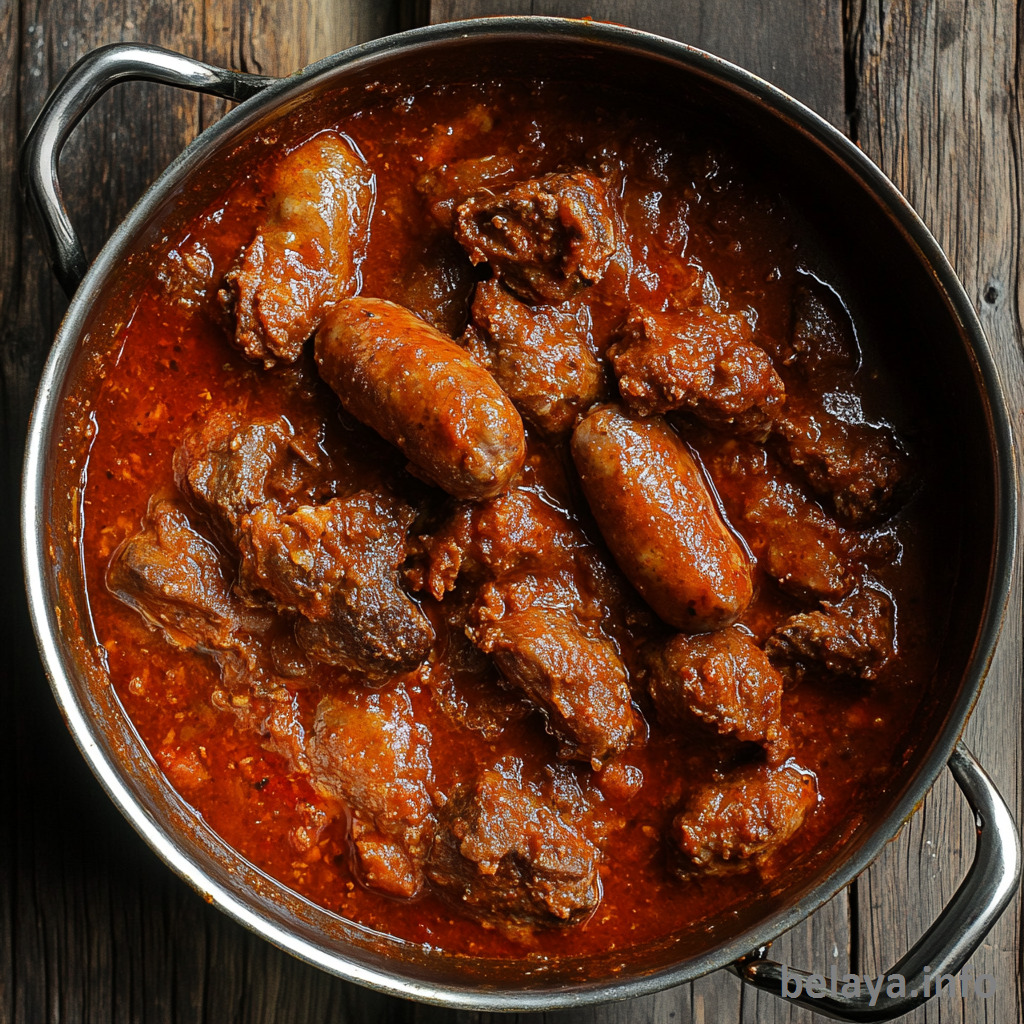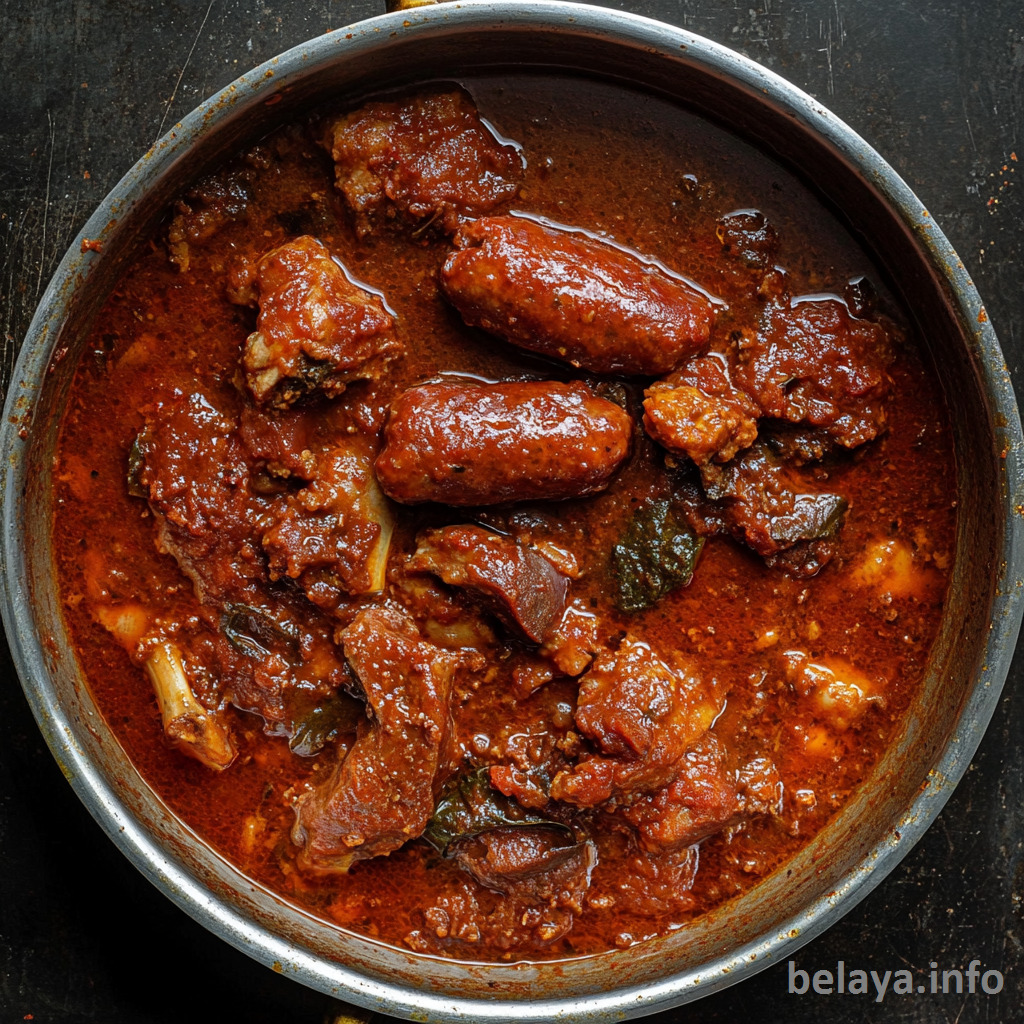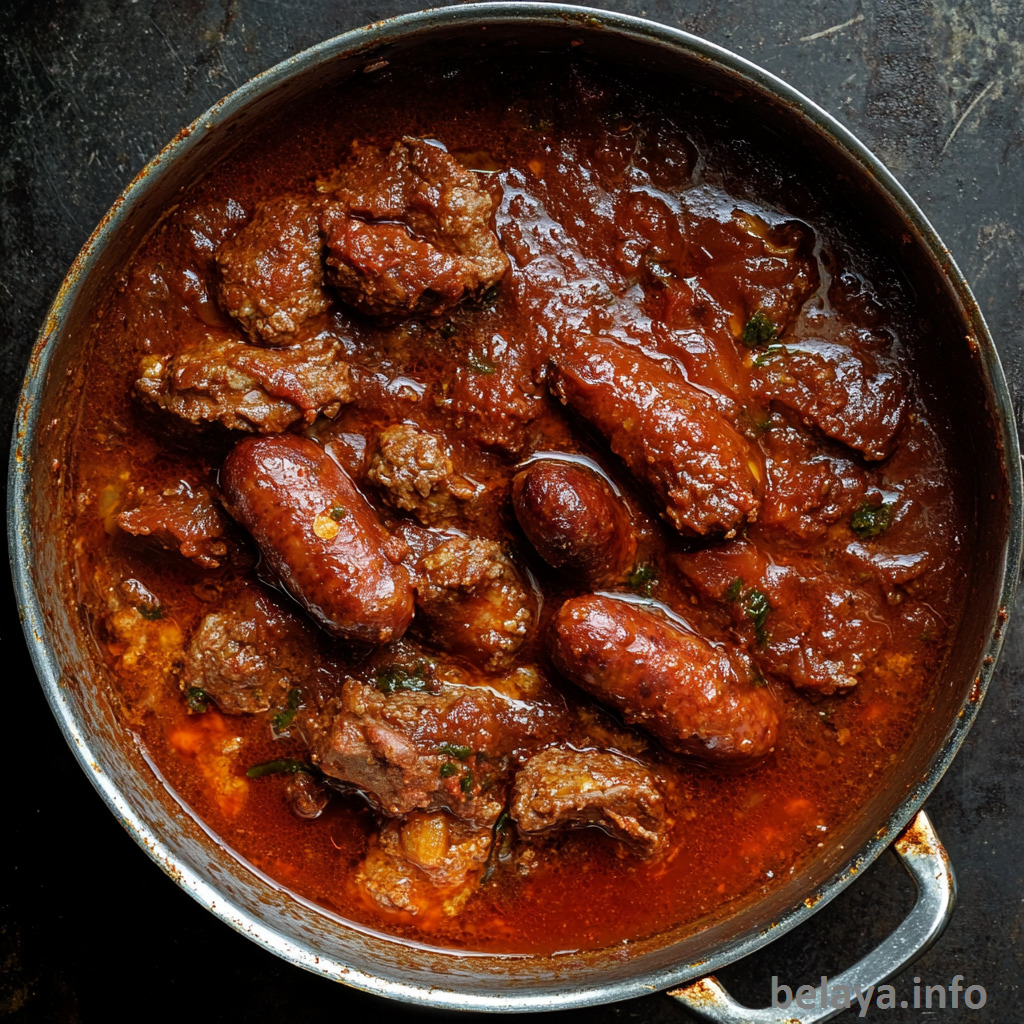The Real Ragu
Rich, rustic, and deeply rooted in Italian tradition, The Real Ragu is more than just a meat sauce—it’s a slow-cooked labor of love that brings out the soul of home-cooked comfort food.
This dish honors the classic Bolognese method: a trio of finely chopped vegetables forming the flavor base, followed by a careful layering of ground meats, red wine, and a long, slow simmer that allows every ingredient to melt into a silky, savory sauce.
With every bite, you taste the patience it demands—making it perfect for Sunday dinners, family gatherings, or when you crave something truly authentic and satisfying.

Why People Will Love The Real Ragu Recipe:
Rich, Slow-Cooked Flavor: The long simmering time allows the ingredients to deeply meld, creating a luxurious, full-bodied sauce that’s both hearty and comforting.
Authentic Italian Roots: This recipe honors traditional Italian cooking techniques, making it a soulful experience that transports you straight to Bologna.
Perfect for Sharing: It’s a dish made for gathering—warm, generous, and ideal for serving at family dinners or intimate get-togethers.
Versatile Serving Options: Whether tossed with pasta, spooned over polenta, or layered into lasagna, the ragu adapts to many comforting meals.
Balance of Meat and Vegetables: The classic soffritto base of carrot, onion, and celery provides depth and balance to the richness of the beef and pork.
Deep Umami Notes: The combination of red wine, tomato paste, and beef stock gives the sauce a deep umami richness that lingers on the palate.
Feels Like a Labor of Love: Though simple in ingredients, the care and time involved in cooking makes it feel like a special, homemade gift.

Key Ingredients
Ground Beef and Pork: A classic pairing that brings richness and complexity—beef offers depth while pork adds tenderness and a subtle sweetness.
Soffritto (Carrot, Onion, Celery): This aromatic trio forms the flavor backbone of the sauce, gently releasing their sweetness and enhancing the savory base.
Red Wine: Not just a liquid—it’s a layer of depth. As it reduces, it infuses the sauce with a rich, slightly fruity boldness that defines a true ragu.
Passata and Tomato Paste: These provide the sauce’s body and mellow acidity, offering a silky texture and deep tomato flavor without overpowering the meat.
Beef Stock: Used gradually, it sustains the sauce’s moisture during the long simmer and concentrates into a luscious, velvety consistency.
Bay Leaf (Optional but Transformative): A subtle herbal note that lingers in the background, adding nuance and rounding out the richness.

Expert Tips:
Take your time with the soffritto: Slowly sweating the finely diced carrot, onion, and celery (without browning) allows their natural sugars to develop, creating a sweet, aromatic foundation that’s crucial to an authentic ragu.
Brown the meat in stages: Avoid overcrowding the pan when adding the ground beef and pork. Searing in batches ensures proper browning, which builds flavor through the Maillard reaction rather than steaming the meat.
Deglaze with purpose: After browning the meat, the red wine should be used to deglaze the pan, scraping up all the flavorful brown bits stuck to the bottom. These bits add immense depth to the sauce.
Simmer low and slow—never rush: Ragu develops its signature depth from gentle, uncovered simmering over 2–3 hours. This allows the flavors to marry and the sauce to concentrate without drying out.
Add stock in intervals, not all at once: Feeding the sauce gradually with warm beef stock mimics traditional Italian braising techniques, helping the flavors bloom layer by layer.
Use high-quality passata and tomato paste: The tomato elements should be smooth and vibrant, without bitterness. A good tomato base is essential to balancing the richness of the meat.
Let it rest before serving: After cooking, allow the ragu to rest off heat for 15–20 minutes. This helps the sauce thicken naturally and allows flavors to settle into harmony.
Pair with wide pasta shapes: Tagliatelle, pappardelle, or rigatoni work best, as their ridges and surface area cling to the ragu, delivering maximum flavor in every bite.

The Real Ragu
Ingredients
1 carrot
1 white onion
1 stalk celery
8.8 oz 250g ground beef (mince) (250g)
8.8 oz 250g ground pork (mince) (250g)
2 cups sieved tomatoes (passata) (470g)
1 tablespoon tomato paste
1 cup (230ml) red wine (240ml)
4 cups beef stock (1 litre)
1 bay leaf (optional)
1 tablespoon olive oil
1 pinch salt and pepper
Instructions:
Step 1:
Peel and finely dice the carrot, onion, and celery. In a large skillet or saucepan, heat the olive oil over medium heat. Add the chopped vegetables and sauté gently until soft and fragrant, about 10 minutes.
Add the ground beef and pork. Cook, stirring occasionally, until the meat is fully browned and no longer pink.
Step 2:
If there’s a lot of grease, carefully spoon out some of the excess fat.
Pour in the red wine and let it simmer until reduced by half, which concentrates the flavor.
Next, stir in the passata, tomato paste, half of the beef stock, and a pinch of salt and pepper.
Step 3:
Add the bay leaf and stir the sauce to combine. Lower the heat and let the ragu simmer gently, uncovered, for about 2½ hours.
As the sauce reduces, gradually add the remaining beef stock to keep it moist and rich. Stir occasionally and check if it needs more liquid to prevent sticking.
To serve:
Toss the ragu with freshly cooked pasta or spoon it over polenta or creamy mashed potatoes.

Important Notes When Making The Real Ragu:
Texture is as important as taste: A proper ragu should be thick, not watery. It clings to the pasta rather than pooling underneath. Slow simmering without a lid is key to achieving that ideal consistency.
Fat balance matters: While some fat enhances flavor, too much can make the ragu greasy. After browning the meat, assess the pan and remove excess fat if needed—this keeps the sauce rich but clean.
Patience transforms flavor: Ragu is not a quick sauce. The transformation happens over time—meat softens, acidity mellows, and the flavors deepen into something far more than the sum of its parts.
Salt in layers, but lightly: Begin with just a pinch, and taste at the end. The beef stock and reduction concentrate flavors, so early over-seasoning can lead to an overly salty dish.
Don’t skip the wine: Even if the alcohol cooks off, red wine adds a base of acidity and complexity that balances the meat and tomato. It’s a foundational element, not just an optional add-on.
Resting enhances flavor: Like stews or braises, ragu often tastes even better the next day. If you can, make it in advance—it gives the sauce time to mature and deepen further.
Choose quality over shortcuts: Use real beef stock (preferably homemade or low-sodium), a good-quality passata, and fresh aromatics. Ragu rewards attention to ingredient quality.

How To Enjoy The Real Ragu After Cooking
Rest Before Serving:
After simmering for hours, let the ragu sit off the heat for 15–20 minutes. This resting time allows the sauce to settle, thicken slightly, and develop a smoother, more cohesive flavor.
Toss, Don’t Just Top:
Instead of spooning the ragu over pasta, add the cooked pasta directly into the pan with the ragu and toss gently over low heat for a minute or two. This allows the sauce to cling to every strand or shape, creating a perfect fusion.
Add Pasta Water if Needed:
If the sauce feels too thick after tossing with pasta, add a splash of the starchy pasta water. It helps emulsify the sauce and bind it better to the noodles, making the dish silky and cohesive.
Garnish Thoughtfully:
Top each serving with freshly grated Parmesan or Pecorino Romano. A sprinkle of chopped fresh parsley or basil adds a pop of color and brightness that balances the richness.
Serve with Intention:
Plate the pasta or ragu carefully in shallow bowls to keep the heat. Pair with rustic bread or garlic toast for dipping and serve alongside a glass of red wine to enhance the ragu’s deep, savory notes.
Leftover Magic:
Use leftovers creatively: spoon the ragu over creamy polenta, layer it in lasagna, or serve it with roasted vegetables. It only gets better with time.

Nutrition Information:
Based on one serving (out of 6 total servings):
Calories: 290 kcal | Total Fat: 17.6 g | Saturated Fat: 6.4 g | Monounsaturated Fat: 7.1 g | Polyunsaturated Fat: 1.1 g | Cholesterol: 65 mg | Sodium: 450–650 mg (depending on salt and stock used) | Total Carbohydrates: 8.2 g | Dietary Fiber: 1.5 g | Sugars: 4.6 g | Protein: 22.5 g
Note: This estimate includes the full ingredients list (beef, pork, passata, wine, stock, vegetables) and assumes no pasta or polenta has been added. For a full meal, the pasta will contribute additional calories and carbs.

Frequently Asked Questions:
Can I make this ragu in advance?
Yes, in fact, it’s even better the next day. The flavors deepen as it rests, making it ideal for preparing a day ahead. Store it in the fridge for up to 4 days or freeze for up to 3 months.
What type of pasta works best with this ragu?
Ribbons like tagliatelle, pappardelle, or fettuccine are perfect because they hold the thick, meaty sauce well. Tube-shaped pastas like rigatoni also work beautifully.
Can I substitute the red wine with something non-alcoholic?
Yes. While red wine adds depth, you can replace it with low-sodium beef broth or a splash of balsamic vinegar diluted in water to mimic the acidity and richness.
How do I know when the ragu is done simmering?
It should be thick, rich, and deeply flavorful with a glossy, cohesive texture. The sauce should cling to the spoon and leave a clean trail when stirred. Taste for balance—meat should be tender, and the tomato flavor mellow.
Is it necessary to use both ground beef and pork?
Using both gives the ragu a more balanced flavor—beef for depth and pork for sweetness and fat. However, you can use all beef, all pork, or even ground turkey or veal, though it will slightly alter the traditional taste and texture.
Why do I need to cook the vegetables first before adding the meat?
Sautéing the carrot, onion, and celery (soffritto) first draws out their natural sweetness and builds a flavorful base. If you add them after the meat, they won’t soften properly or develop depth.
Should I cover the pan while simmering the ragu?
No. Simmering uncovered is essential. It allows the sauce to reduce slowly and concentrate in flavor and texture. Covering it would trap moisture and prevent the sauce from thickening properly.
How finely should I chop the vegetables?
Very finely—almost minced. This ensures they melt into the sauce during the long simmer, adding flavor and body without leaving noticeable chunks.
How can I prevent the sauce from drying out during the 2.5-hour simmer?
Add the beef stock gradually as the sauce reduces. Stir every 20–30 minutes and monitor the consistency. If it looks too dry, add more stock or a splash of water.
Can I use a slow cooker for this recipe?
Yes, after browning the meat and cooking the soffritto, transfer everything to a slow cooker. Cook on low for 6–8 hours. However, for best results, reduce the sauce on the stovetop at the end to concentrate the flavor and thicken the consistency.